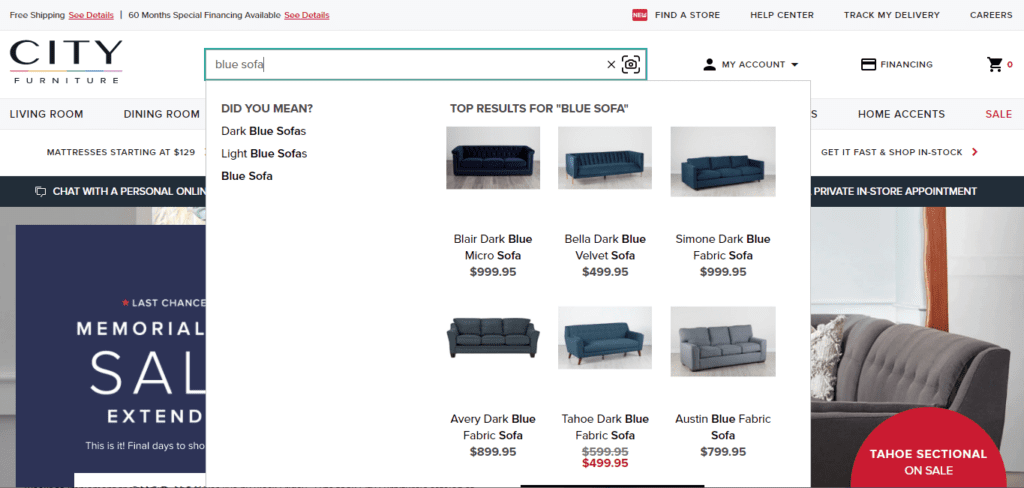When shoppers were stuck at home amid the pandemic, they were looking for a change of scenery. Many opted to refresh their own furnishings in record numbers, City Furniture found.
“Everything exploded last year, and we grew triple digits. We’re still on that trend through 2021,” says Anelena Longhi, vice president of marketing and digital marketing at the online furniture retailer. She declined to reveal specific figures.
Besides 2020’s explosive growth, every year since 2016—when Longhi joined the retailer—it has experienced double-digit, year-over-year growth in revenue. “We’ve grown leaps and bounds in the digital space, building out our strategy and development,” she says.
With an influx of new customers in 2020 and beyond, City Furniture wanted to make it easier for shoppers to search and find the right product faster, she says.
City Furniture began exploring artificial intelligence-powered visual search to help make its products easier for online shoppers to find, Longhi says.
“How can we make it relevant, personalized to exactly what they’re looking for? This visual search component is a really strong solution to bring that to life and not depending on product info and heavy data,” she says. “This really allowed us to scale and bring that to life much stronger.”
The home goods retailer landed with product discovery platform Syte.ai in summer 2020. She declined to share the cost of the new tool. It took about six weeks to implement the feature, and it was live by Black Friday. Syte.ai took City Furniture’s catalog of product photographs and synced it with its system to produce the visual search results.
Now, shoppers who type a search query will see several product image options that could match their search. For example, searching “blue sofa” brings up several types of sofas in different shades of blue that might match the query. And the search function offers suggestions to narrow down the search further, such as “Did you mean dark blue sofas/light blue sofas?” And as shoppers engage with the search function, the system learns over time to surface better visual results.


Since adding this feature, City Furniture experienced strong, positive results, Longhi says. But it’s hard to compare how it has really performed considering the feature was added during the pandemic, she says.
Its conversion rate in April increased 400% year over year for shoppers who engaged with search compared with shoppers who browse the site not using search. And average order value is 25% higher for customers who use search. In addition, shoppers are using the feature at a higher rate than expected. The retailer was hoping for a 4% engagement rate with the feature, meaning shoppers click on one of the suggested visual products, and it’s performing at a 10% engagement rate, Longhi says.
“Shoppers who are leveraging the feature have a higher intent to purchase. But the data is showing that it’s providing the correct results,” Longhi says.
City Furniture’s long-term goal is to provide a holistic personalized experience on its site for shoppers. “And AI sits at the core of that,” she says.
That means, when a shopper lands on CityFurniture.com, the homepage should be suggesting product recommendations based on purchase and browsing history, the search should produce results most relevant to the shopper and that experience should follow the shopper from page to page. In the future, City Furniture plans to build digital showrooms for shoppers. These showrooms would consist of an entire room, such as a living room or bedroom, with products to peruse and purchase based on that shopper’s style and taste from past browsing and purchase history.
“Visual search is not the first element or feature to use AI on the site; visual search was just the latest feature,” Longhi says. “Our search and product recommendations is all powered by AI. We’ve been using it for a few years as a core part of the shopping experience and will continue to do so.”
Favorite